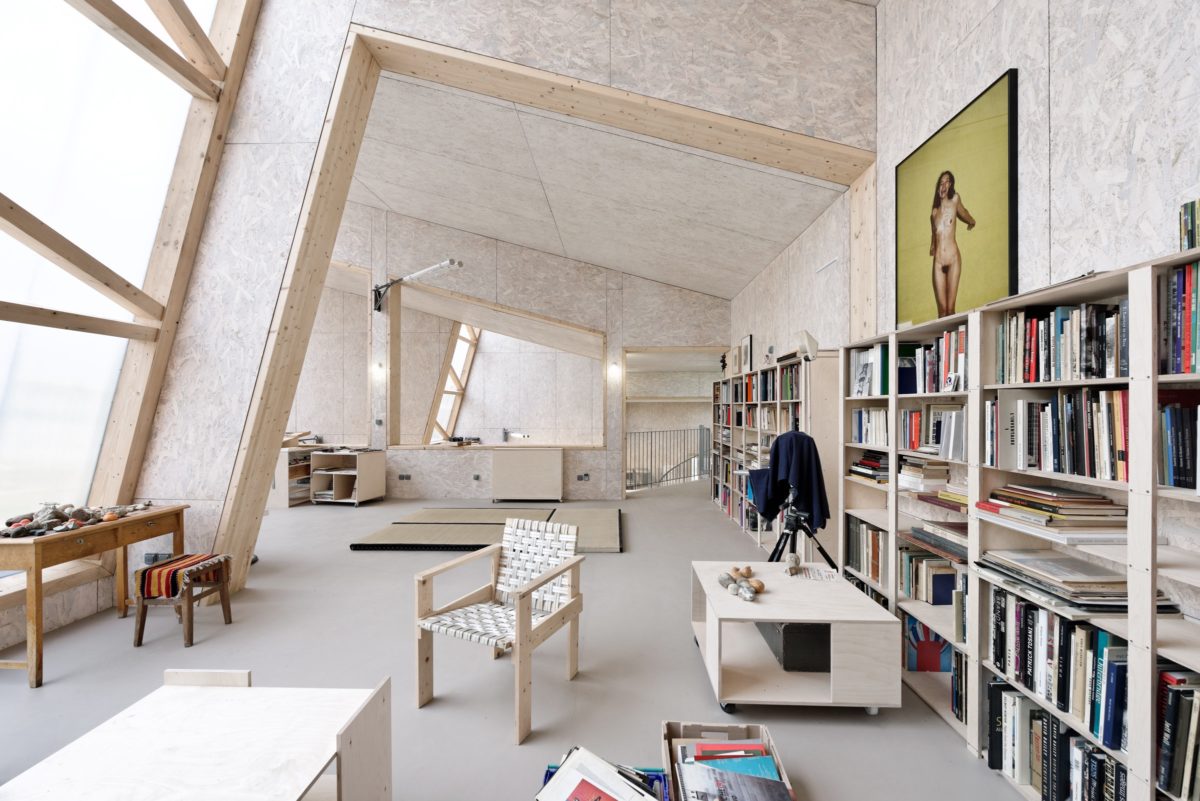
A collection of striking architectural volumes wrapped in black rubber conceals a sprawling studio and workshop space in the French countryside
Rising up next to an old farm complex on the outskirts of the village of Saint-Langis-lès-Mortagne in Normandy, France, is a striking series of five architectural forms wrapped in black rubber.
During the day, the dark, geometric volumes are dynamically contrasted with the lushness of the surrounding countryside; while at night, light shines from within through the angled opaque glass wall on each face, giving the huddled structures an almost alien appearance.
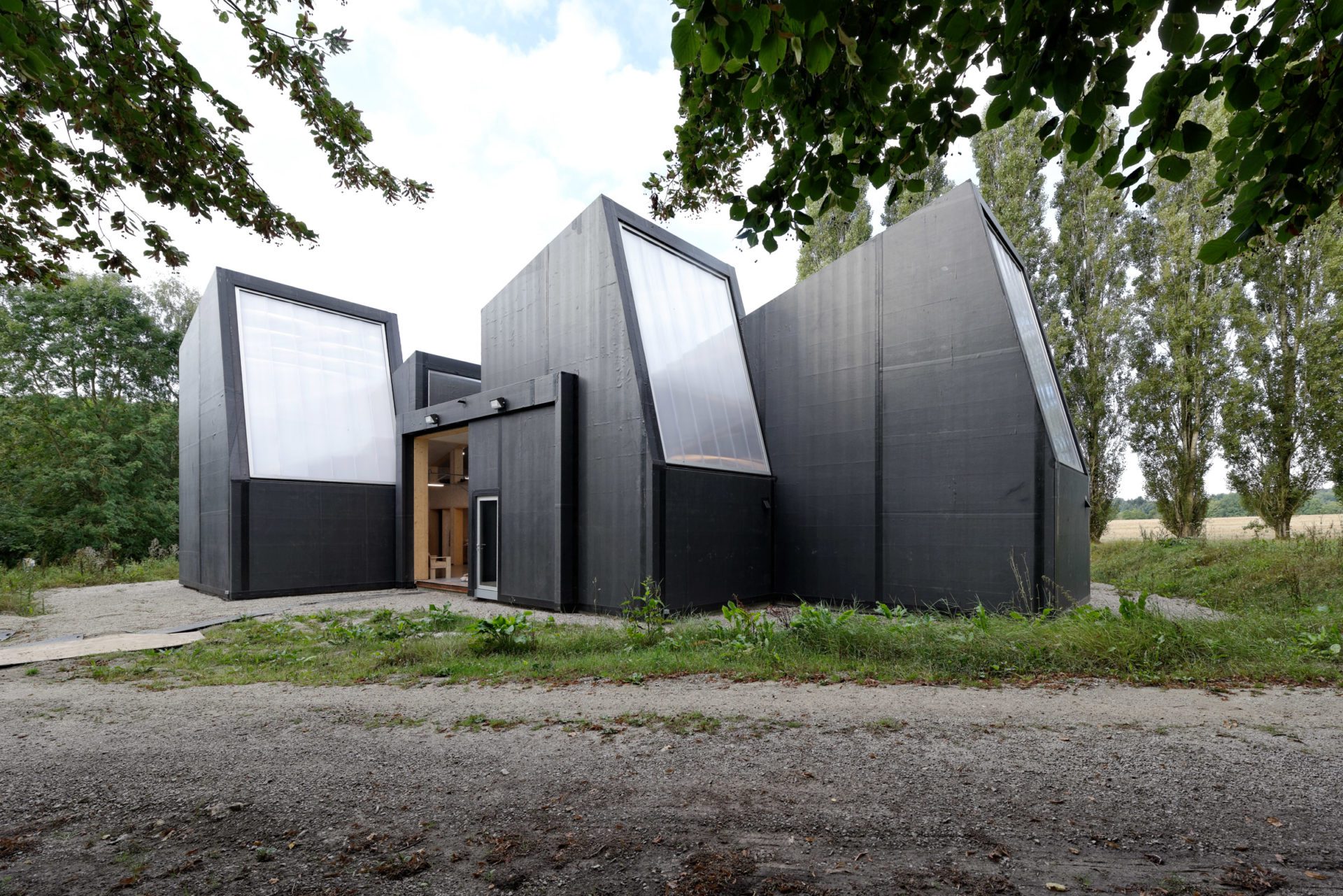
This is the new creative studio of French artist Jean-Luc Moulène and one of the most recent works by French artist-architect Didier Fiúza Faustino – and is playfully titled “The Good, the Bad, and the Ugly”. The black rubber clings to the timber substructure, emphasising the sharp, geometric lines but with a wrinkled surface that, somewhat uncomfortably, appears to be concealing what lies within creating a desire to peel back the surface.
“The matt black skin transforms the building into a shadow, making it disappear into its environment, like a building not meant to be seen, only used,” says Fiúza Faustino. “The structure is pared down to its barest essentials – in this case referring to an ultimate site for creative practice.”
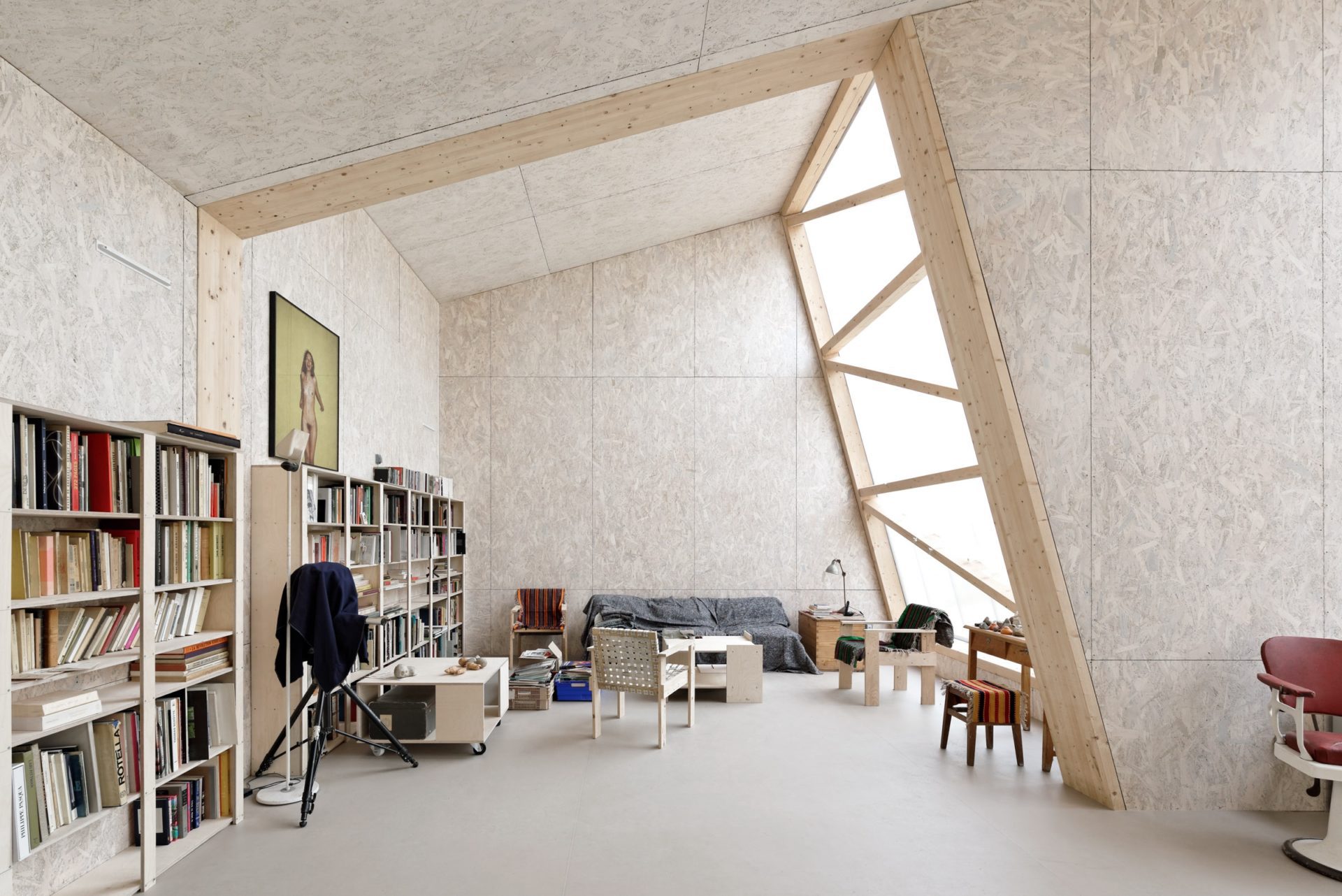
While from the outside, the studio appears as a collective of five four-metre-wide volumes, the interior is a sweeping 265m2 open space with eight-metre-high ceilings and a 100m2 mezzanine. Faustino describes the studio as an “architectural tool” for the artist and each bay within the open space represents a different purpose – from small-scale handcrafting and intimate relaxation spaces to workshops for larger machined work.
“Each moment in the day, Jean-Luc changes his activity – from 6am to 8am he draws, from 9am on he produces models, and so on,” explains Fiúza Faustino. “His activity is a kind of choreography, from one moment to another, to another. So, my point was to create a space that allows him to adapt his trajectories according to his needs.”
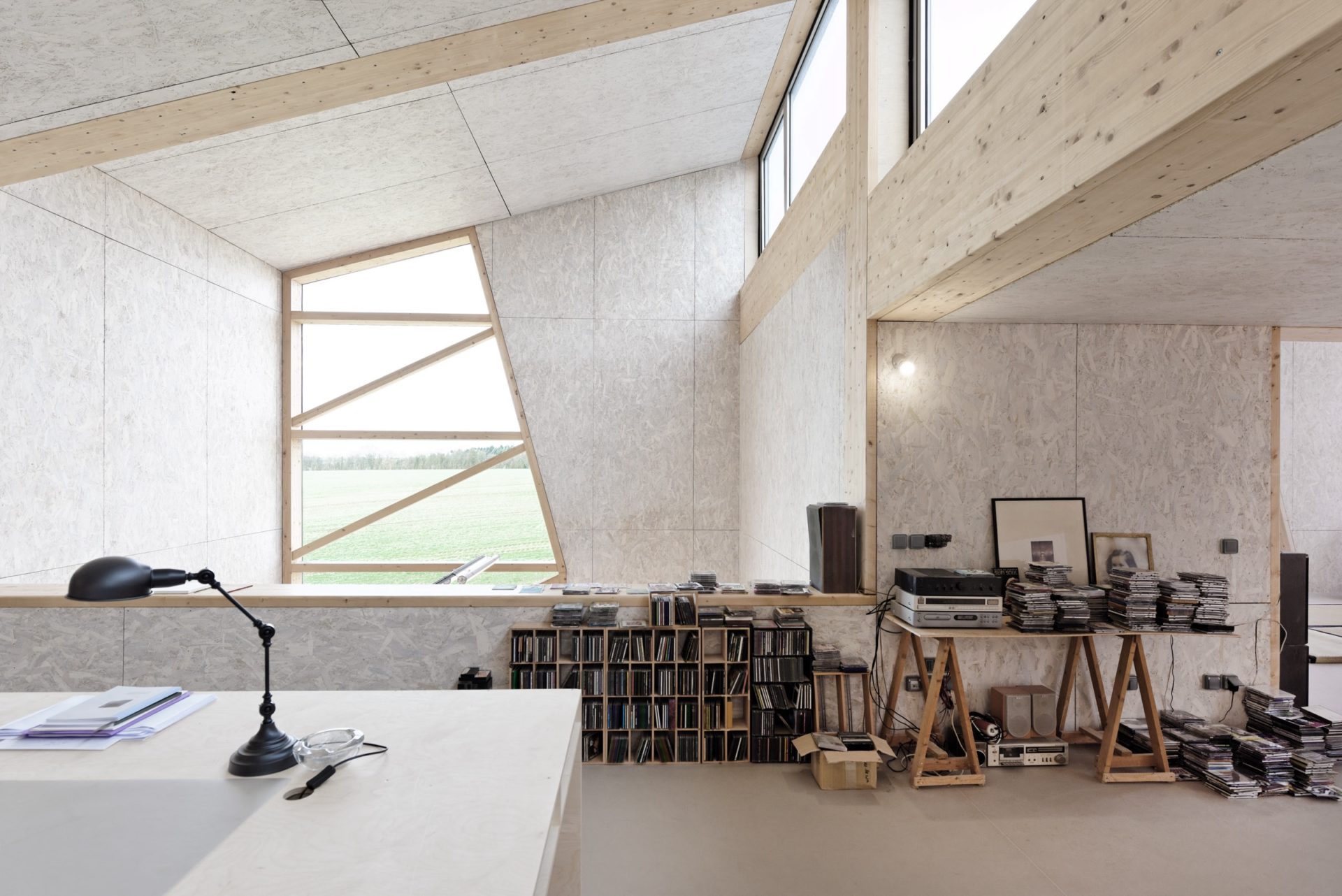
This kind of boldly conceptual work is not only a reflection of Moulène’s work, but also that of Fiúza Faustino himself. As director of Bureau des Mésarchitecture, a studio based between Paris and Lisbon that he founded with Pascal Mazoyer, Fiúza Faustino has produced an incredibly wide-ranging body of work, from installations and sculptures to films, architecture, and editorial projects – all of which explores the relationship between body and space.
Fiúza Faustino describes himself as “an architect without scale” – having worked on everything from small-scale urban interventions to housing projects and retails spaces – and, as an artist, his work is held in such prestigious collections as New York’s MoMA, the Centre Pompidou in Paris, and the MAXXI National Museum in Rome.
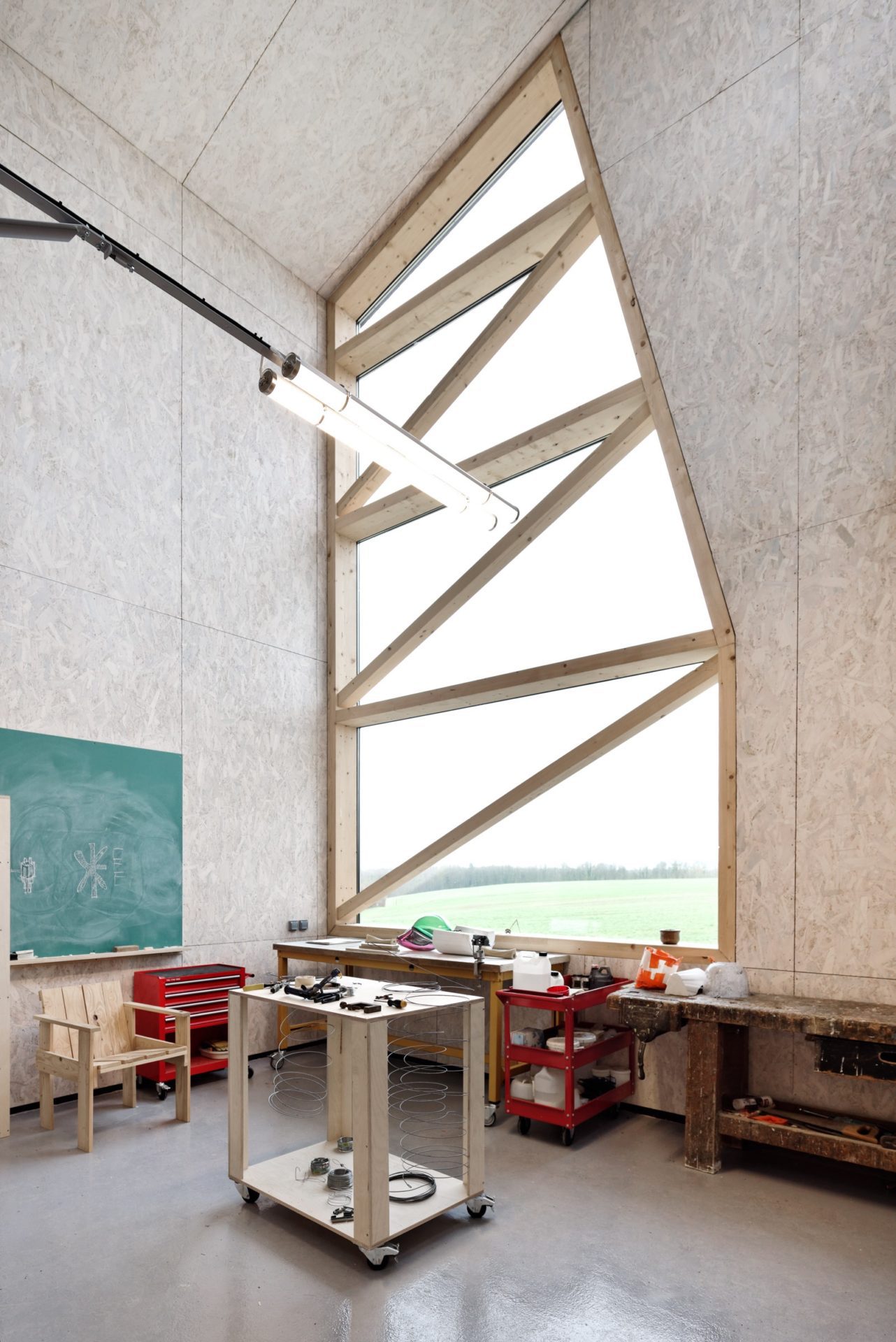
Next month, the artist will be the subject of EXIST/RESIST, a retrospective of his work over the past three decades at Lisbon’s Museum of Art, Architecture and Technology (MAAT) – which will feature the bespoke lamps designed for Moulène’s studio repurposed in a scenographic installation.
Images by David Boureau
Enjoyed this article? Read more: Hello Wood creates a collection of boulder-like cabins in the Hungarian countryside






















